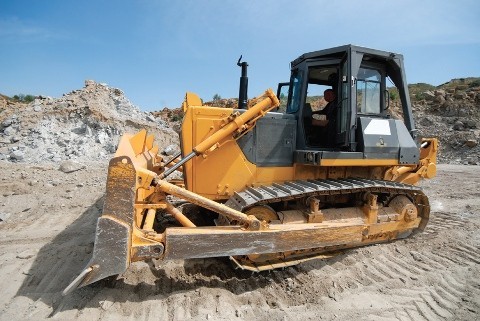Home » Course Layouts » Free Course Layout Udemy
Mobile equipment is “a wheeled or tracked vehicle which is engine or motor powered, together with attached or towed equipment, but not a vehicle operated on fixed rails or tracks.” In food processing and manufacturing environments, the major type of mobile equipment used is the forklift. Other mobile equipment found in the workplace can include farm-type tractors and trailers, front-end loaders and ATVs. It’s important to know the safety essentials when operating and maintaining mobile equipment.
0
56
English
English [CC]
- Learn basic syntax that can apply to any language.
- Learn what is a programming language and the basic concepts for beginners.
- Understand what is Javascript in it's truest form.
- Know the basic syntax of Javascript.
- Know some hidden quirks in Javascript.
Description
Mobile equipment (ME) is the term used to describe a self-propelled machine or a combination of machines that handle materials or provide a work platform for workers. Forklifts, pallet jacks, scissor lifts, tractors (agricultural or other), aerial lift platforms, bulldozers, backhoes, and cranes are examples of powered mobile equipment.
The use of ME reduces the need for manual handling and therefore contributes to the prevention of musculoskeletal disorders. However, it exposes the worker to other possible hazards that could lead to serious consequences if safety procedures are not applied and followed.
Hazards associated with the use of powered mobile equipment include:
- Roll-overs,
- Hitting a pedestrian,
- Collisions with other mobile equipment,
- Falling loads,
- Fire hazard and chemical exposure during battery charging (when battery operated),
- Contact with overhead live electrical conductors, and
- Exposure to carbon monoxide and carbon dioxide (when using fuel-operated equipment in poorly ventilated areas).
Special requirements for the use of ME in mines
The employer must make sure that:- The ME used to remove material from a draw point is not moved beyond a point subtending a 45° angle back from the brow of the draw point to the back of the bucket once the brow is open;
- ME is provided with front and rear lights;
Workers’ responsibilities:
- Follow the manufacturer’s instructions and the appropriate safe operating procedures,
- Do not proceed when you do not have a clear view of the path to be traveled until a person who has a clear view of the path to be traveled by the unit of ME signals to you that is safe to do so,
- When operating the forklift, remain at the controls when the forks are in the raised position,
- Do not drive the forklift while a worker is on a work platform mounted on the forklift,
- Inspect, as required, the equipment, and
- Report any malfunction or dangerous condition.
Course content
-
- Foreword 00:20:00
- These Include but Are Not Limited To 00:20:00
- Persons Put at Risk by Working Around 00:40:00
- Concerns for Safety 00:10:00
-
- Vision Statement 00:10:00
- Today’s Situation 00:20:00
- Available Solutions 00:10:00
- Management Commitment 00:10:00
- Employee Involvement 00:10:00
- Pre-Construction Work- Site Analysis 00:10:00
- Equipment Operator Responsibilities 01:00:00
- Manufacturer’s Recommendations 00:20:00
- Observations 00:10:00
- Importance Of Health And Safety In The Workplace FREE 00:10:00
- Basic Health & Safety at Workplace Video FREE 00:20:00
- Forklift Pre-Start and Finally Inspection, and Crane Safety Inspection 4 weeks
N.A
- 5 stars0
- 4 stars0
- 3 stars0
- 2 stars0
- 1 stars0
No Reviews found for this course.
Instructor
OpenCoursa
Accessible Education for Everyone
5
5
6
24217
4637
We are an educational and skills marketplace to accommodate the needs of skills enhancement and free equal education across the globe to the millions. We are bringing courses and trainings every single day for our users. We welcome everyone woth all ages, all background to learn. There is so much available to learn and deliver to the people.
Explore Free Courses
Access valuable knowledge without any cost.
{"title":"","show_title":"0","post_type":"course","taxonomy":"course-cat","term":"engineering-skills,health-and-safety","post_ids":"","course_style":"free","featured_style":"course6","masonry":"","grid_columns":"clear4 col-md-3","column_width":"268","gutter":"30","grid_number":"4","infinite":"","pagination":"","grid_excerpt_length":"20","grid_link":"1","grid_search":"0","course_type":"","css_class":"","container_css":"","custom_css":""}












